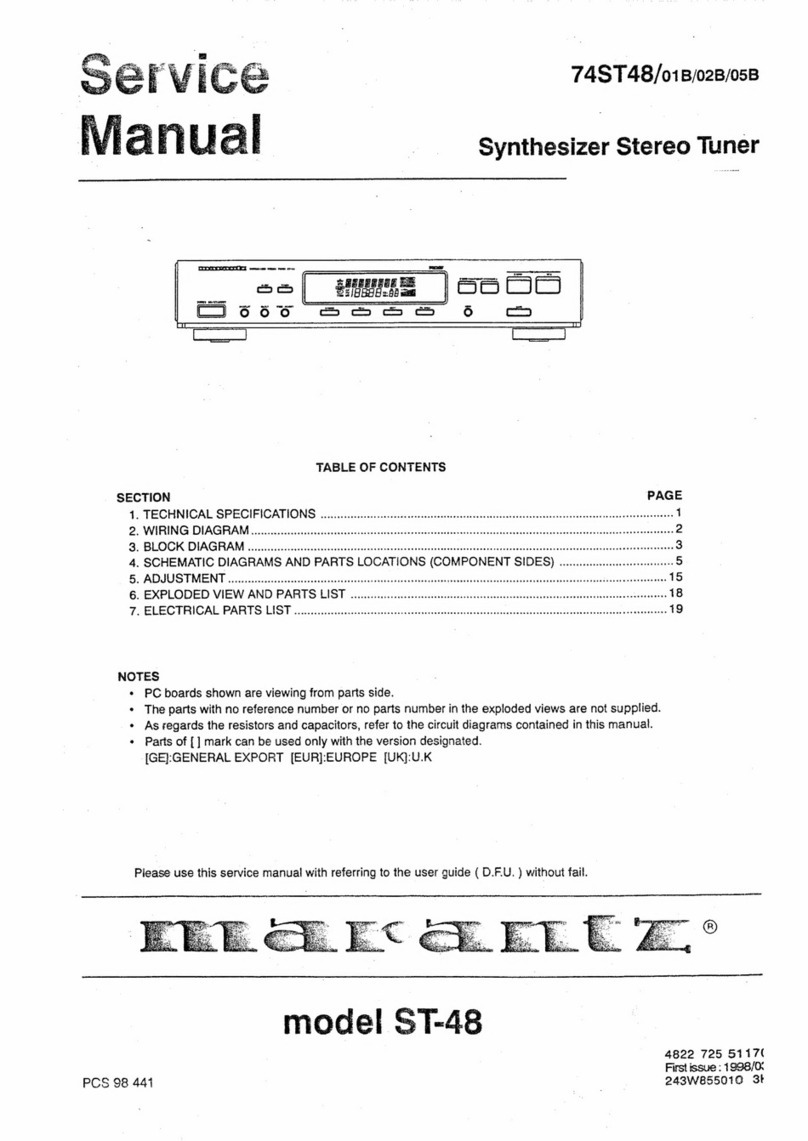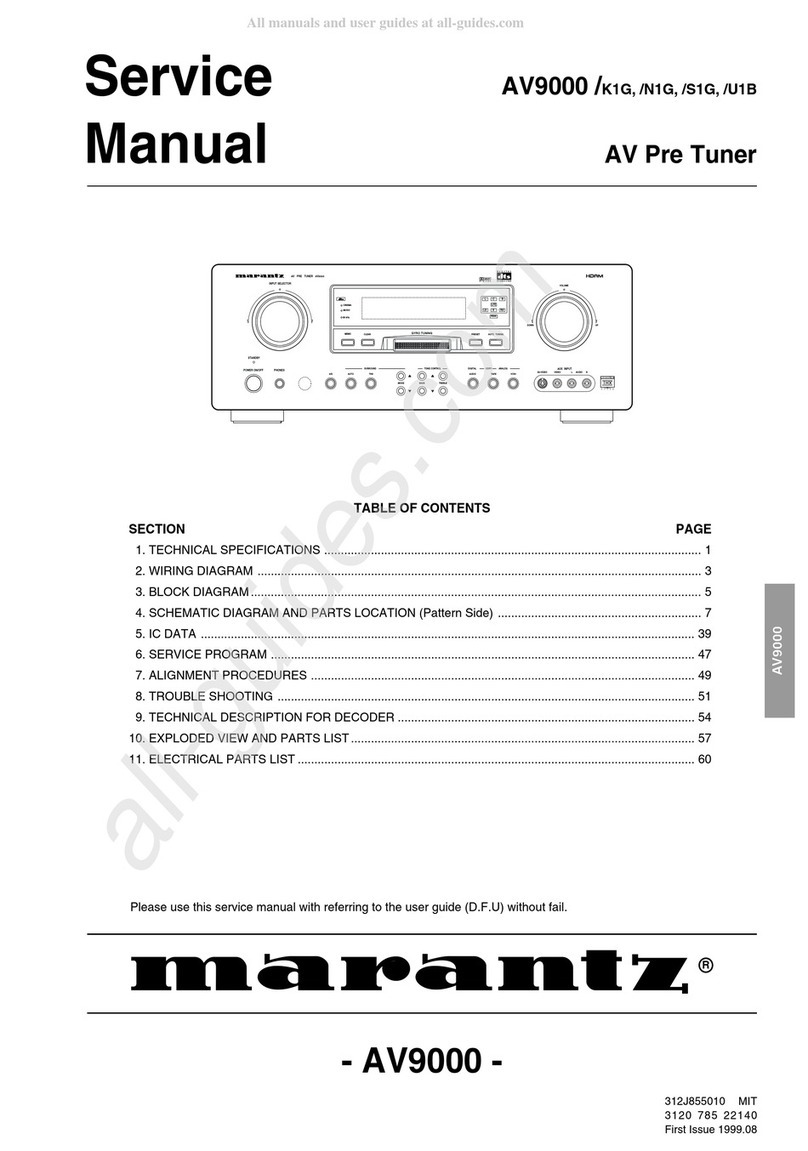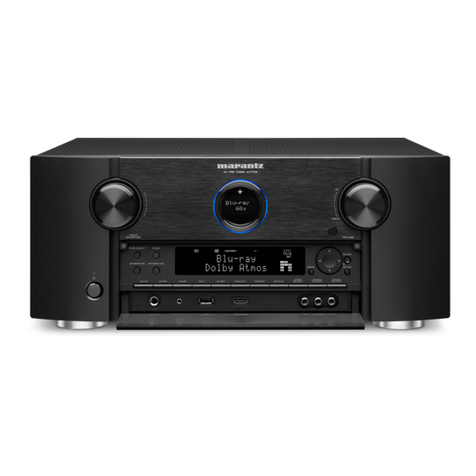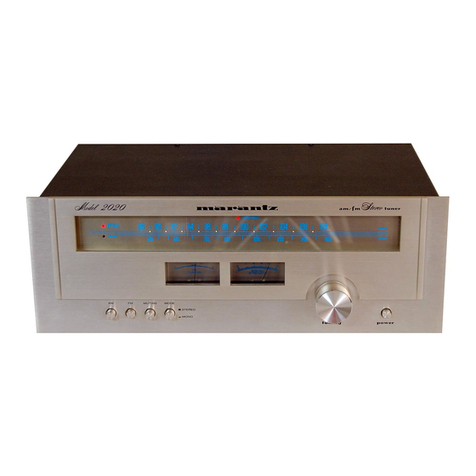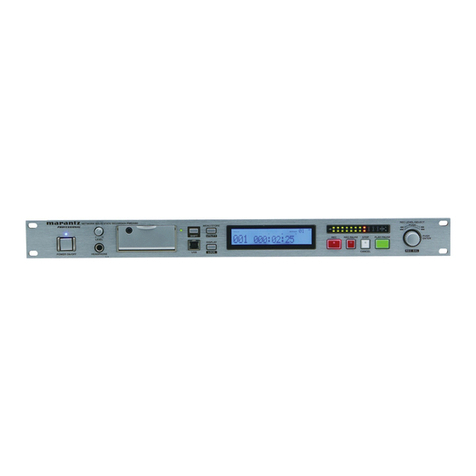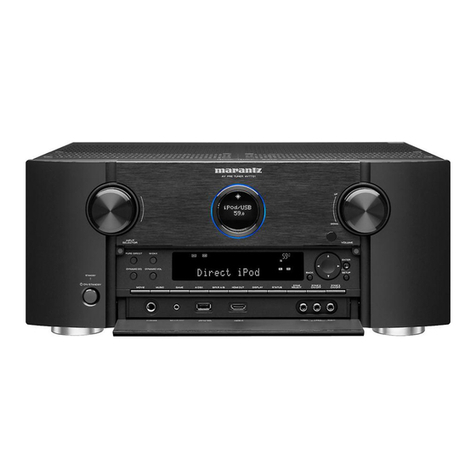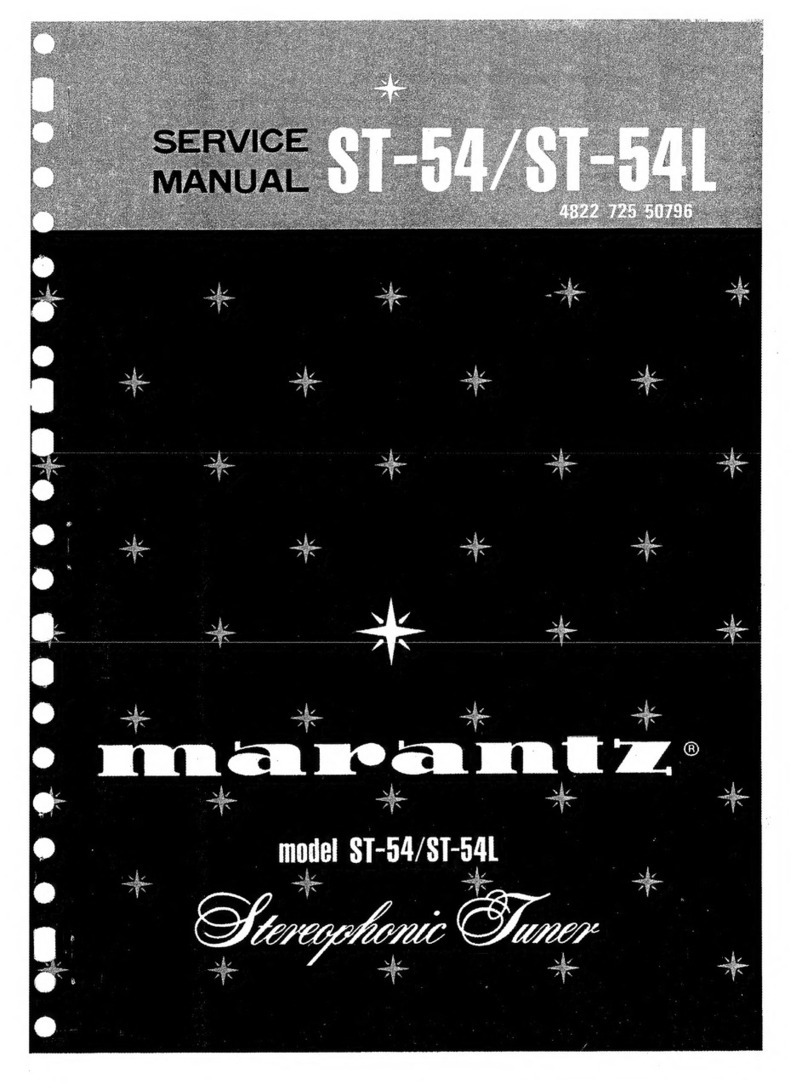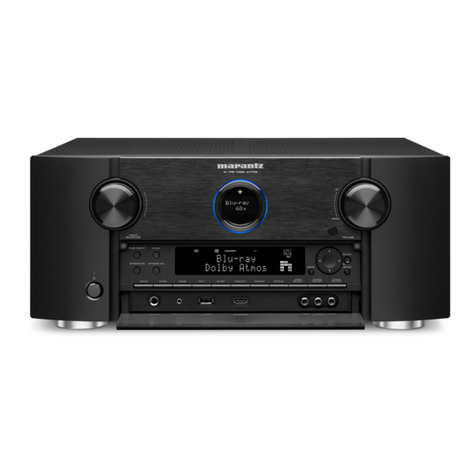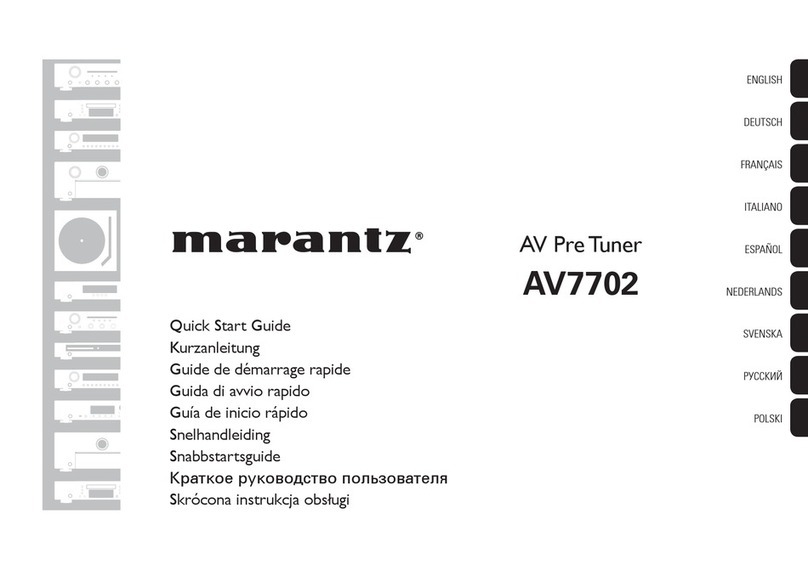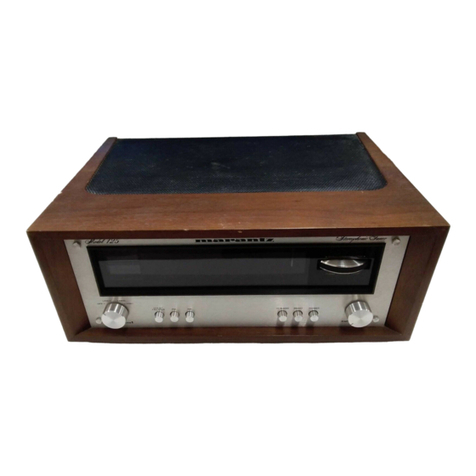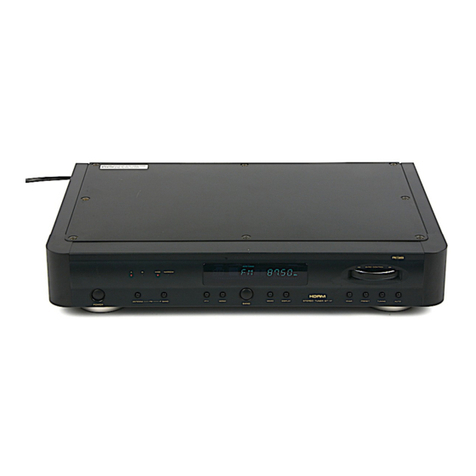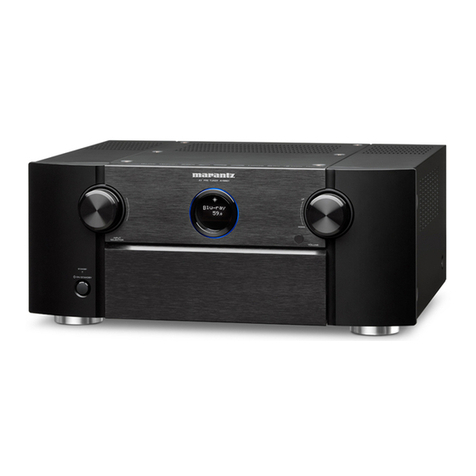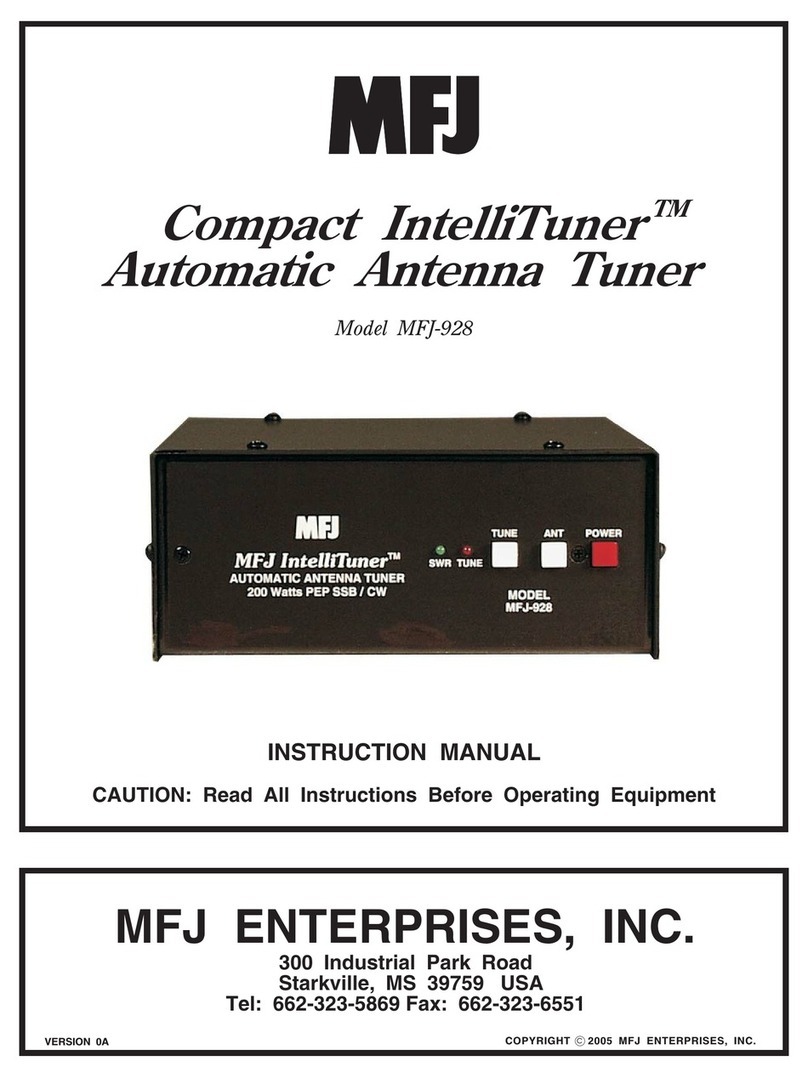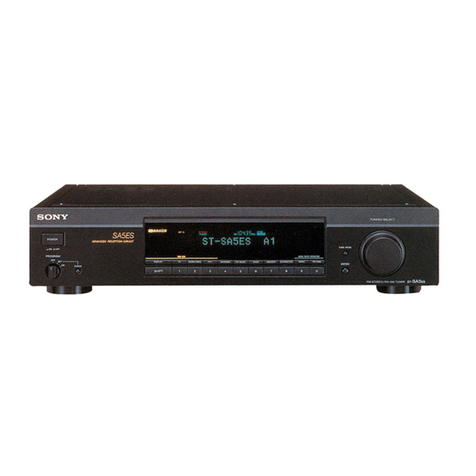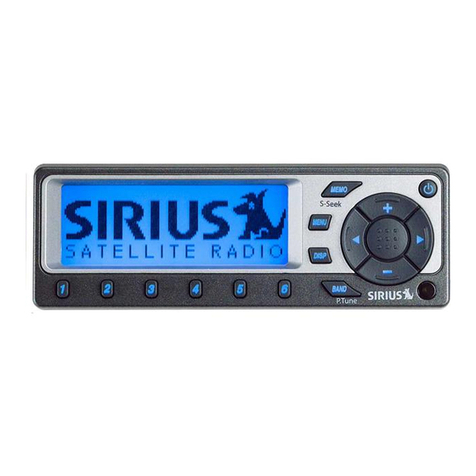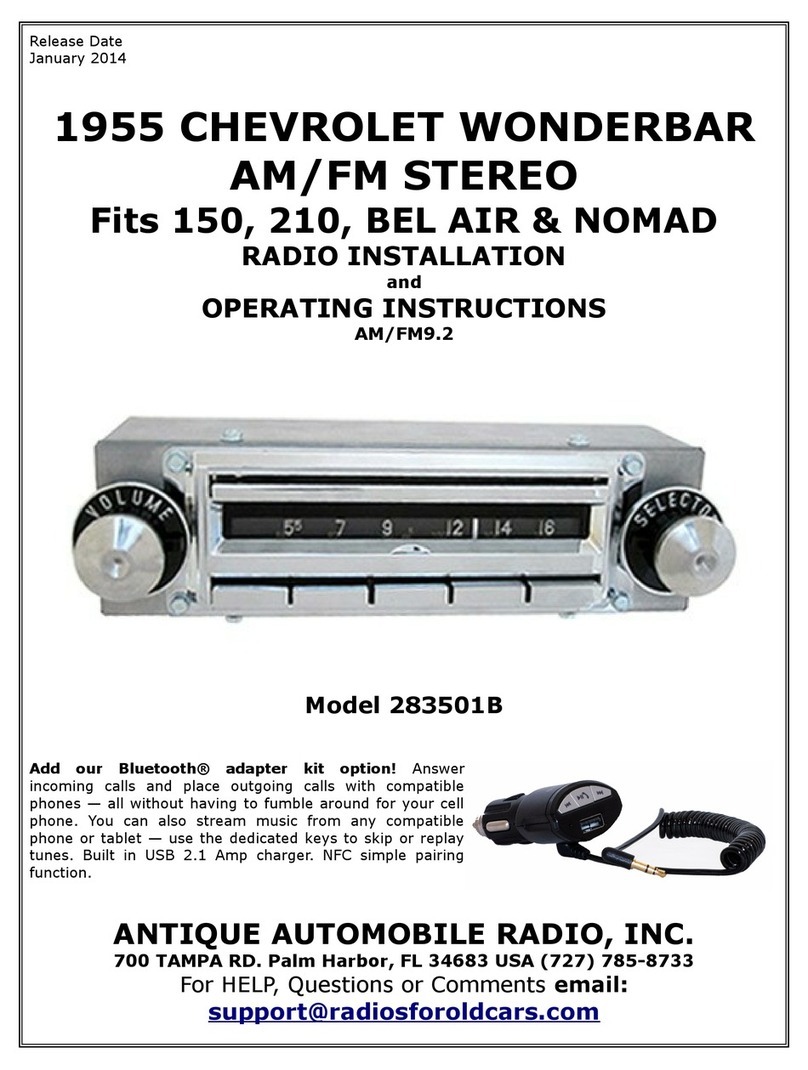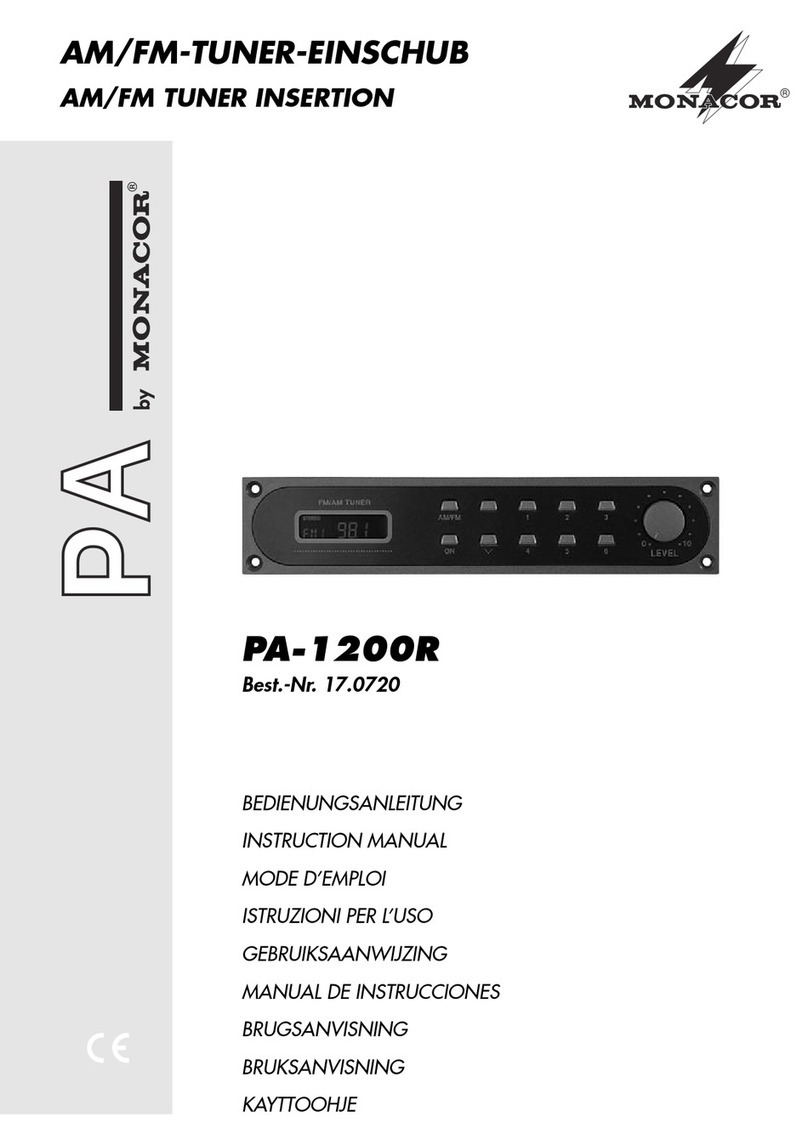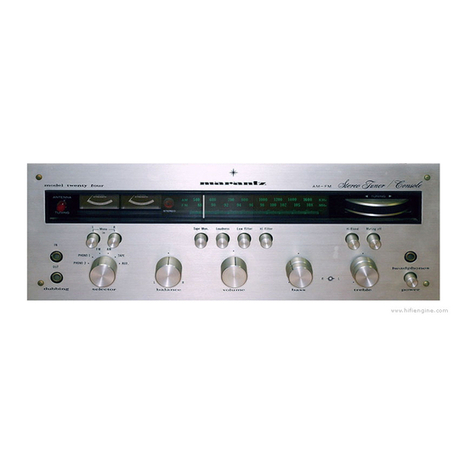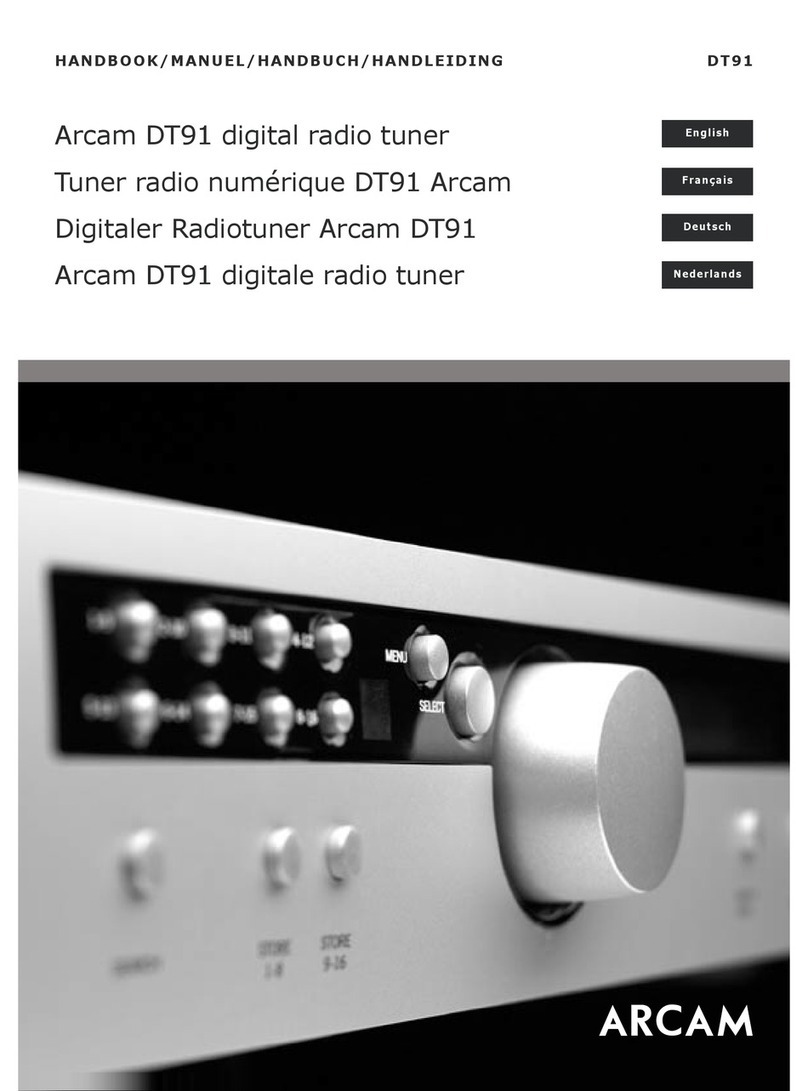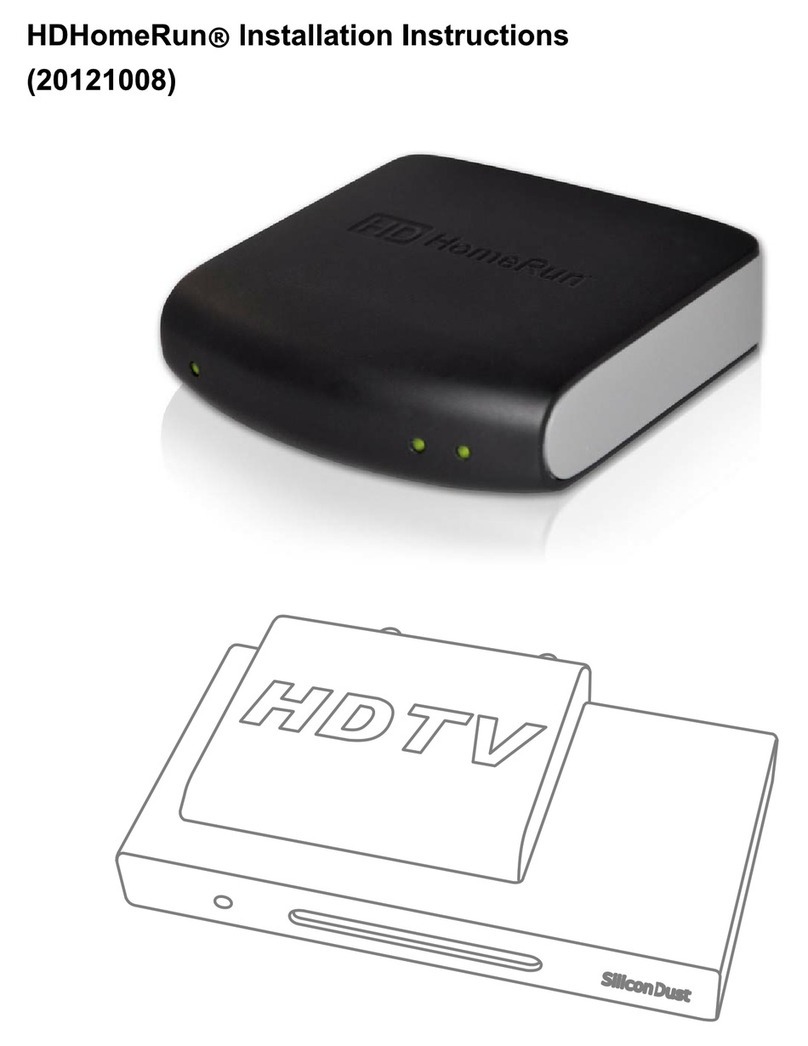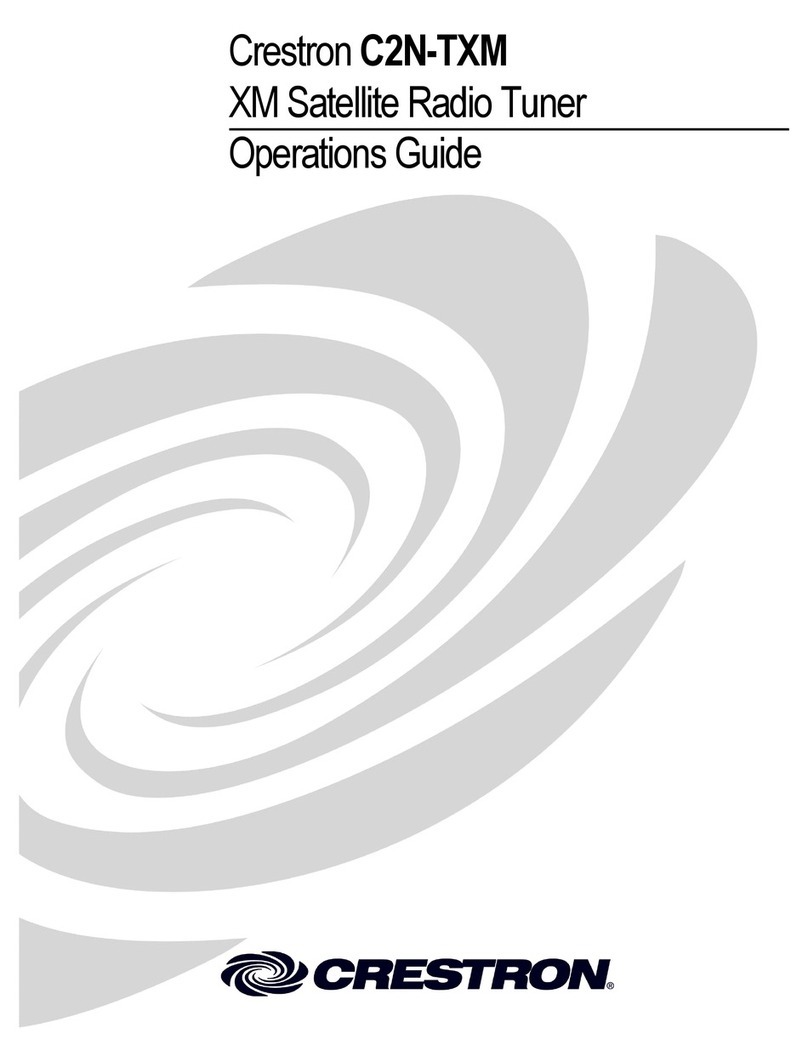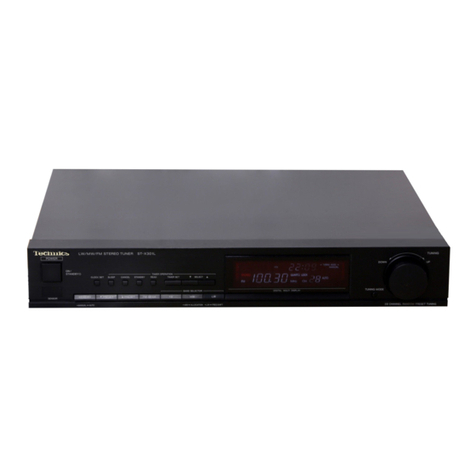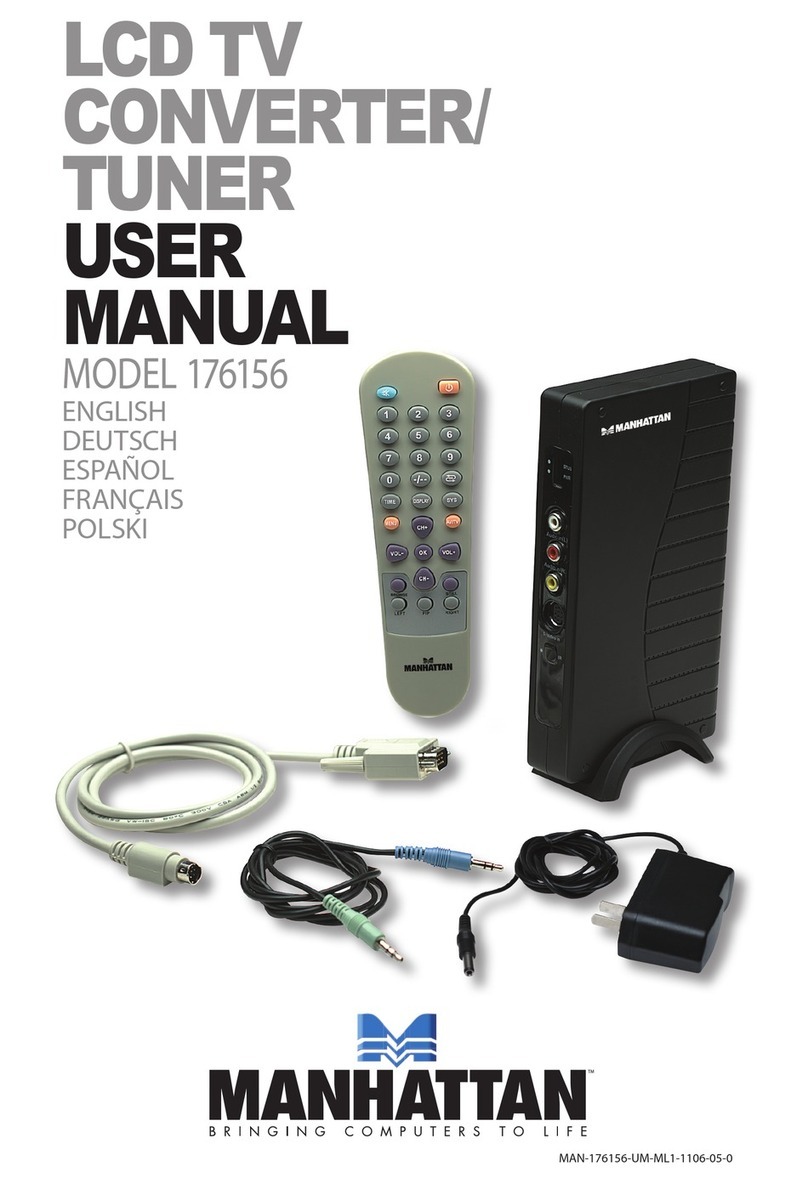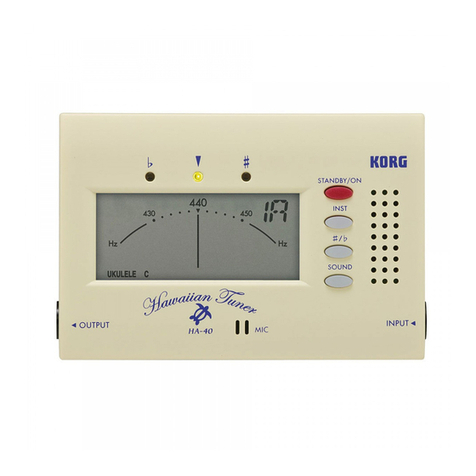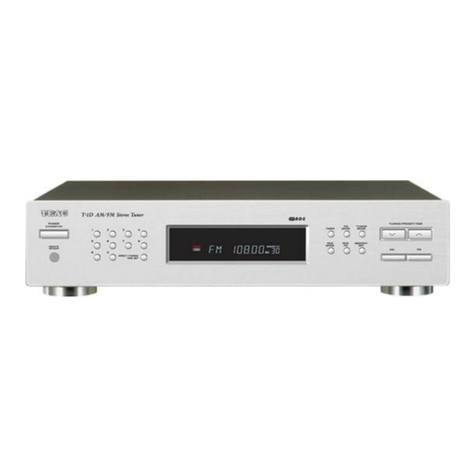
Contents
ABOUT THIS MANUAL................................................................3
What you can do with this manual ...........................................3
Using Adobe Reader (Windows version)...................................4
SAFETY PRECAUTIONS...............................................................6
NOTE FOR SCHEMATIC DIAGRAM..............................................7
NOTE FOR PARTS LIST................................................................7
Instructions for handling semi-conductors and optical unit ...7
1. Ground for Human Body......................................................7
2. Ground for Workbench ........................................................7
TECHNICAL SPECIFICATIONS.....................................................9
DIMENSION ..............................................................................10
CAUTION IN SERVICING ...........................................................11
Initializing This Unit.................................................................11
JIG FOR SERVICING ..................................................................11
DISASSEMBLY ..........................................................................12
1. FRONT PANEL ASSY............................................................14
2. RADIATOR ASSY .................................................................14
3. DIGITAL PCB .......................................................................15
4. VIDEO PCB..........................................................................16
5. INPUT PCB ..........................................................................16
6. XLR PCB..............................................................................17
7. SMPS PCB ...........................................................................17
8. TRANS POWER....................................................................17
SPECIAL MODE.........................................................................18
Special mode setting button ..................................................18
1. Version Display Mode ........................................................19
2. Selecting the Mode for Service-related Operations...........23
2-1. DIAGNOSTIC MODE (Service Path Check Mode) ..............24
DIAGNOSTIC PATH DIAGRAM...........................................29
2-2. 232C Standby Clear Mode................................................68
2-3. Operation Info Mode........................................................68
2-4. TUNER STEP mode (N only) ..............................................69
3. PANEL / REMOTE LOCK Selection Mode ............................70
4. CY920 Reboot Mode ..........................................................71
5. CY920 Initialization Mode ..................................................71
JIG FOR SERVICING ..................................................................72
Procedure after Replacing the Printed circuit boards............75
Procedure after Replacing the Microprocessor, etc...............75
FIRMWARE UPDATE PROCEDURE............................................76
1. Updating via USB ...............................................................76
2. Updating via DPMS ............................................................85
SURROUND MODES AND PARAMETERS..................................92
TROUBLE SHOOTING................................................................95
1. POWER ...............................................................................95
2. Analog video......................................................................96
3. HDMI/DVI ...........................................................................99
4. AUDIO ..............................................................................101
5. Network/Bluetooth/USB ..................................................103
6. SMPS ................................................................................108
Audio Check PASS .................................................................110
CLOCK FLOW & WAVE FORM IN DIGITAL BLOCK................... 111
LEVEL DIAGRAM.....................................................................112
BLOCK DIAGRAM ...................................................................118
POWER DIAGRAM ..................................................................122
WIRING DIAGRAM..................................................................123
PRINTED CIRCUIT BOARDS ....................................................124
SCHEMATIC DIAGRAMS (01/39).............................................131
SCH01_DIGITAL CONNECT....................................................131
SCH02_DIGITAL POWER........................................................132
SCH03_MAIN CPU.................................................................133
SCH04_EXPANDER................................................................134
SCH05_CPU LEVEL CHG ........................................................135
SCH06_DIR ............................................................................136
SCH07_AUDIO PLD ...............................................................137
SCH08_DSP1 .........................................................................138
SCH09_DSP2 .........................................................................139
SCH10_DSP3 .........................................................................140
SCH11_DSP4 .........................................................................141
SCH12_ADC ..........................................................................142
SCH13_ZONE DAC ................................................................143
SCH14_CY920 .......................................................................144
SCH15_VIDEO DECODER.......................................................145
SCH16_HDMI SW2 ................................................................146
SCH17_HDMI SW1 ................................................................147
SCH18_VSP & IP & OSD .........................................................148
SCH19_VIDEO PLD ................................................................149
SCH20_HDMI TX & SCALER ...................................................150
SCH21_INPUT........................................................................151
SCH22_PREOUT.....................................................................152
SCH23_F-HDMI .....................................................................153
SCH24_A-VIDEO....................................................................154
SCH25_RC-5 & MX-PORT.......................................................155
SCH26_RS232C & TRIGGER....................................................156
SCH27_SIDE CNT...................................................................157
SCH28_FRONT CNT ...............................................................158
SCH29_MAIN DAC1...............................................................159
SCH30_MAIN DAC2...............................................................160
SCH31_XLR............................................................................161
SCH32_REGULATOR & TUNER...............................................162
SCH33_FRONT.......................................................................163
SCH34_H-DAM_AMP1 ..........................................................164
SCH35_H-DAM_AMP2 ..........................................................165
SCH36_H-DAM_AMP3 ..........................................................166
SCH37_H-DAM_AMP4 ..........................................................167
SCH38_H-DAM_AMP5 ..........................................................168
SCH39_SMPS.........................................................................169
EXPLODED VIEW ....................................................................170
PACKING VIEW .......................................................................171
SEMICONDUCTORS ................................................................172
1. IC's....................................................................................172
2. FL DISPLAY.......................................................................190
2
